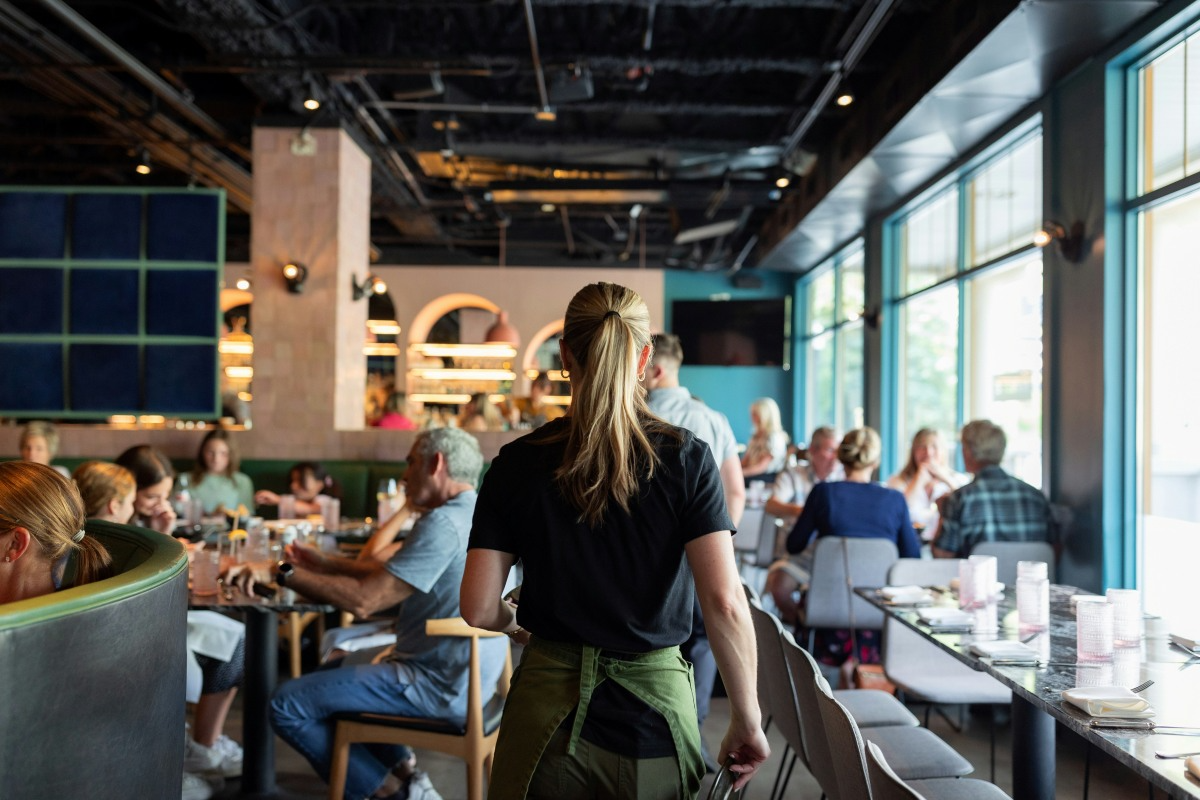Hostie vs SoundHound: Which Platform Fits Your Restaurant Best?
Comparison
The average restaurant misses 150 calls every month. Here’s how voice AI for restaurants turns missed reservations into revenue and improves guest service.
October 7, 2025
•
Voice AI

Running a restaurant means juggling endless priorities. Guests pack the dining room and the phone keeps ringing – they expect fast, friendly service at every moment. No wonder 62% of operators say they can’t keep up with staffing.
On top of that, restaurants miss an average of 150 calls every month – most tied to reservations and takeout. Each of those missed calls is a missed opportunity to boost revenue.
That’s why more restaurants are turning to voice AI for restaurants. People who know the realities of a busy shift built this technology to ensure staff answer every guest call, log every reservation, and never let an opportunity slip away.
In this article, we’ll cover what voice AI actually is, why it matters for hospitality, the key benefits for operators, and practical tips for implementation.
A voice AI agent, or virtual concierge, for restaurants is like having a reliable host who never misses a call. It picks up the phone, holds a natural conversation with your guests, confirms reservations or orders, and shares the details with your team instantly.
Traditional phone lines just ring and ring, but a virtual concierge matches the pace of service.
Guests can call to book a table, place a takeout order, or ask about private dining, and the system will confirm the details and make sure nothing slips through the cracks.
Your guests feel taken care of, and your staff stay focused on the dining room instead of being pulled away by the phone.

The real value of voice AI shows up in the day-to-day. It creates smoother shifts and helps capture more revenue. Here’s what that looks like in practice.
Guests don’t just call during service hours. They call at lunch, late at night, or while you’re closed. With voice AI, no call goes unanswered. Reservations are confirmed instantly, so you never miss a booking because staff weren’t available.
One of our customers, Belotti Ristorante, now has around 90% of their calls handled automatically through Hostie, which means their hosts can stay focused on greeting guests instead of juggling phones. And since 12% of their calls come in after hours, Hostie makes sure they never miss those either.
Staff tied up on the floor often miss takeout and delivery orders. With voice AI, those calls get answered every time. Orders are captured clearly and passed directly to the kitchen, ensuring accuracy and efficiency.
When phones ring constantly, staff must choose between serving guests in the dining room and answering calls. Those nonstop interruptions stress them out and drive burnout.
Voice AI takes those repetitive tasks off their plate. By handling routine calls, staff can stay present with guests and deliver better service.
Restaurants like Flour + Water have seen measurable improvements, including 13% more walk-ins, simply because staff are more available on the floor.

Many restaurants serve diverse communities, and guests feel more at home when they can communicate in their preferred language. Voice AI can provide multilingual support, making your hospitality more inclusive.
Another advantage is the ability to handle multiple calls at once. During peak hours, a traditional phone line handles only one call at a time, but voice AI ensures guests never wait on hold. This helps you deliver a consistent experience no matter how busy the night gets.
On the guest side, seamless service matters just as much as what’s on the plate. In fact, 69% of Americans say they’re likely to give up on a restaurant if no one answers the phone.
Every call captured by voice AI becomes useful data. You can see when calls peak, track what percentage are reservations versus takeout, measure average call length, and monitor how guest demand shifts week by week.
Instead of guessing how many hosts to schedule, you’ll know when calls spike and how to staff accordingly.
Bringing voice AI into your restaurant doesn’t need to be overwhelming. The best results come from starting small and building staff confidence.
These are the lifeblood of most restaurants and the calls that often slip through the cracks during busy shifts. By starting here, you’ll see the fastest wins: fewer missed reservations, more confirmed takeout orders, and immediate relief for your front-of-house team.

Technology only works if it plays nicely with the tools you already use. Make sure your chosen system connects directly with your reservation platform and POS. That way, details flow seamlessly to your team, and no one is stuck re-entering information or double-checking bookings.
For example, Hostie integrates with leading restaurant systems like Perfect Venue and Toast, so reservations and guest details flow right where you need them.
Voice AI works best as a partner, not a replacement. It’s there to catch the routine calls so your people can focus on high-value interactions.
Help your team understand which calls the system will handle automatically and which ones it will route to them. When staff see the system taking work off their plate, they quickly become its biggest advocates.
If you operate multiple units, resist the urge to roll out everywhere at once. Start with one location, gather feedback, and refine your approach. Review the data to see how many calls the system captured, how much revenue it recovered, and how it improved staff satisfaction.
Once you’ve proven the value in one restaurant, scaling to others becomes an easy decision. Operators who take this phased approach often find adoption smoother, buy-in stronger, training easier, and results more visible across the board.

In most cases, no. For example, our voice AI is built to sound natural and conversational, so it feels like you’re talking to a helpful host. Guests get their questions answered and reservations confirmed without the awkward, robotic tone people usually expect from “AI.”
The pricing for a voice AI agent or virtual concierge for restaurants depends on the size of your restaurant and the features you need. But the real worth lies in the value. By catching missed calls and taking pressure off your team, voice AI pays for itself quickly. Many restaurants see a return within the first month.
Every month, restaurants miss about 150 calls. Over time, those missed opportunities can quietly chip away at your bottom line.
A virtual concierge changes the equation by ensuring staff answer every call, care for every guest, and stay focused on the dining room instead of the phone. On top of that, the insights you gain help you run smarter, leaner operations.
At Hostie, we built our platform to support restaurant people, not replace them. We know the pressure of a busy shift, and our mission is simple: help you care for more guests without burning out your staff.
Ready to see the difference for yourself? Start your free trial with Hostie today!]